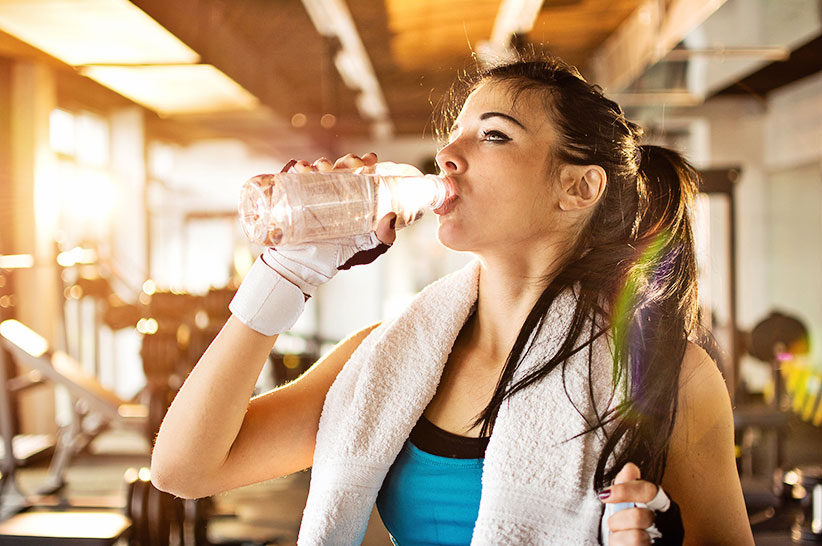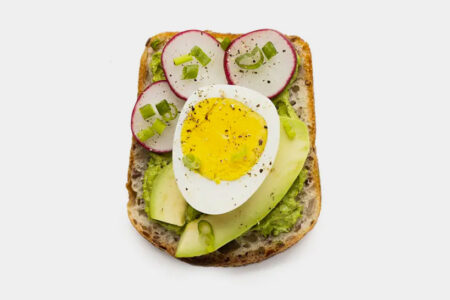Thinking of changing your lifestyle for the best this 2019? If so, that’s good news. Whether your goal is to lose weight, gain more energy, or feel great, know that it’s not too late to start. Now is a perfect time to make that positive shift you want.
What’s a good lifestyle to start?
The keto lifestyle is one that provides benefits that go beyond fat and weight loss. One study shows that overweight people who follow a ketogenic improve their mood. A keto diet is also known to reduce the risk of cancers 1. Furthermore, it helps people with type 2 diabetes achieve more controlled blood sugar levels 2.
Kiss My Keto prepared this guide to show you everything you must know about starting and committing to a keto lifestyle. Dig in.
Keto: It’s Not Just a Diet, It’s a Lifestyle
We hear the same story: People who begin a certain diet start strong. After a few days or weeks, they throw in the towel.
“I feel so deprived!”
“This takes forever to work!”
“Well, I’ve ruined it today so I might as well quit.”
“I’m having these weird muscle cramps.”
If you want the low-carb, high-fat diet to work for you, embrace it as a lifestyle.
Make keto your lifelong goal and create small changes that you can sustain over the long term. Nail the basics of keto. Don’t punish yourself for not eating something keto — because each moment is an opportunity to start again.
How Do I Get Started on a Keto Lifestyle?

Photo by Shutterstock.com
Pure motivation isn’t enough to make you succeed on a keto lifestyle. It’s essential to build a solid foundation of keto. With that, you must learn its basics, mechanisms on your body, and some easy-to-follow recipes.
While there’s an endless number of resources out there, not everything is backed by solid facts and beginner-friendly. To simplify your journey, we recommend these eight books written by experts, practitioners, and people whose lives were transformed by the keto diet.
Becoming Committed to the Keto Lifestyle: 7 Tips to Get Started
Check out these tips to embrace the ketogenic lifestyle and commit to it.

1. Clear out non-keto foods and drinks from your pantry
Remember that a keto diet is a low-carb, high-fat plan. Basically, you cut off carbohydrates from your diet. By doing so, your body uses another source of energy in the form of ketones. Ketones come from your body’s stored fat.
To achieve ketosis, eliminate everything in your cupboard that’s rich in sugar and starch. Steer clear of these non-keto foods and beverages.
Non-keto foods
- Wheat
- Barley
- Quinoa
- Oats
- Rice
- Crackers
- Lima Beans
- White Beans
- Navy Beans
- Soybeans
- Beets
- Turnips
- Oranges
- Apples
- Bananas
- Peaches
- Pizza
- Cakes
- Pastries
- Cereal
- Crackers
Non-keto beverages
- Sweetened alcoholic drinks
- Sweetened tea
- Smoothies
- Bottled or fresh vegetable juices
- Bottled or fresh fruit juices
- Sodas and soft drinks
Some of these foods and beverages may have been part of your regular diet. It can be quite challenging to let go of them at first.

Here’s a helpful tip:
Try to shift your focus on keto-friendly options instead – check the list below. You’ll find that you can enjoy so many tasty foods and drinks, too, and not feel restricted.
Keto diet foods
- Egg
- Bacon
- Pork meat
- Chicken thigh
- Lamb
- Grass-fed beef
- Goat
- Fatty fish (salmon, sardines, mackerel)
- Fatty nuts (macadamias, brazil nuts, almonds)
- Butter
- Mayonnaise
- Cheeses (parmesan, mozzarella, cream cheese)
Keto diet beverages
- Water
- Water with lemon
- Coconut water
- Almond milk
- Coconut milk
- Unsweetened coffee
- Unsweetened tea
A word about protein intake:
When you’re on a keto diet, keep your protein consumption moderate. After all, your body needs protein for optimal brain function and increased athletic performance 3.
The reason why protein consumption needs to be kept moderate is that too much of it can promote gluconeogenesis 4. Gluconeogenesis is a process where amino acids, the building blocks of protein, turn into glucose.
2. Prepare for the “keto flu”
Your transition into the keto diet becomes smoother when you know what to prepare for. One of the things that keto followers go through is the keto flu. The other term for it is “carb flu.”
The keto flu refers to flu-like symptoms resulting from carbohydrate restriction. Keto flu symptoms start to kick in within 1-2 days. You can expect to experience one or more of the following:
- Nausea
- Difficulty concentrating
- Muscle aches
- Drowsiness
- Poor focus
- Stomach aches
- Increased sugar cravings
- Insomnia
- Irritability
- Headaches
- Muscle cramps
- Increased urination
The keto flu is your body’s normal reaction as it withdraws from carbs and tries to adapt to a different fuel source. Your body releases the stress hormone cortisol 5. Also, your insulin levels decrease which leads your body to lose sodium.
All these hormonal changes trigger the symptoms we mentioned above.
But don’t panic. These symptoms go away eventually as you progress. Meanwhile, here are some tips to reduce the keto flu discomfort:
Drink more water
Aim to drink more water than the usual especially on warmer days and after strenuous activities. This is also true if you’re an older person on keto. Water helps you stay hydrated so that you avoid those pesky headaches caused by your increased urine output 6.

Photo by Shutterstock.com
Replenish your sodium
Part of your commitment to the keto lifestyle is learning how to replenish electrolytes. Sodium helps you maintain fluid balance and cures muscle cramps 7. Don’t be scared to consume more sodium. Consume at least 5000 mg daily. You can do this by adding salt to your beverage or drinking bone broth.
Improve your sleep hygiene
You already know that a ketogenic lifestyle interrupts sleep at the beginning. Therefore, fix your habits before bedtime to get better sleep! Limit your daytime napping. Avoid caffeinated beverages and strenuous workouts close to bedtime.
3. Workout while on a keto diet
People starting the keto lifestyle usually ask the following:
- Can you exercise on a keto diet?
- Does exercise help ketosis?
We answer these questions with a resounding yes. Regular exercise plays a vital role in that it helps your body get into and stay in a ketogenic state.
A study was conducted among healthy individuals. In that study, the breath acetone concentration (BrAce), a measure of ketosis and predictor of fat loss, was measured among these healthy subjects. The study revealed that diet and exercise increase BrAce 8.
With that said, adopt a workout regimen. We know that the idea of exercising on keto turns off many people especially during the transition phase.
Remember that exercise doesn’t only speed up weight loss and build muscle, but it also increases your self-confidence and puts you in a happier mood.
Here are two tips when you’re exercising on keto:
Start with low-intensity workouts
Begin your keto journey with low-intensity exercises. Low-intensity exercises such as walking, yoga, swimming, and biking increase your adherence 9. Workouts of higher intensity might get you off to a bad start especially when you’re on the keto flu.
Take MCT oil before working out
MCT stands for Medium Chain Triglycerides. As a dietary form of fat, MCT is being used by keto followers and athletes to boost their energy levels and endurance 10. MCT oil doesn’t just provide non-glucose energy, but it also increases your blood ketone levels.
4. Track your keto macros
Diet macros in keto refer to the macronutrients protein, fat, and carbohydrates. Each of these macronutrients provides you with a certain number of calories. Below, we show you the number of calories per gram of a macronutrient:
- Fat: 9 calories
- Protein: 4 calories
- Carbohydrates: 4 calories
When it comes to your macros on a keto diet, you need to get more of your calories from fat. You already know that your body should get used to metabolizing fat instead of carbs. Keto dietary macronutrient ranges are the following 11:
- 55% to 60% of calories from fat
- 30% to 35% of calories from protein
- 5% to 10% of calories from carbohydrates
Why would you want to keep track of your macro needs? Doing so helps you reap the full benefits of a keto lifestyle faster. That’s how you know you’ve reached your fat loss goals.
However, tracking macros causes unnecessary stress on beginners, which is why the practical solution is to use a diet app or calculator.
5. Try intermittent fasting
Intermittent fasting or IF is a dietary pattern where you cycle between eating and fasting. Now, why would you incorporate intermittent fasting into your keto lifestyle? Why do you fast on a keto diet? Simple — it accelerates weight loss and other effects of keto 12.
Some people who adopt a high-carb diet start IF and don’t see results. They have extreme cravings during the fasting period. When they break their fast, they overindulge in junk foods.
Why? Because their bodies weren’t used to utilizing their natural fat stores for energy. Results from clinical trials explain this phenomenon. Cravings for a specific food type decrease when a person reduces or eliminates these foods from his diet 13. Fasting on a keto diet makes sense.
There are different ways to fast intermittently. The easiest method is to skip a meal. Another method is to fast for an entire day and eat the next day. The trick is to do what works best for you. Listen to your body.
6. Test your ketone levels
“Chase results, not ketones.” You’ve probably heard this saying among keto followers.
While you should not obsess over numbers, measuring ketone levels in your body is still essential because it tells you whether you’ve entered the ketosis state. That’s when you know that your body has already switched from carb to fat for fuel.

Measuring ketone levels can be done using 3 methods:
- Urine testing – Ketone body concentrations can be detected in the urine via urine reagent strips. Urine testing is a convenient and common method 14. However, results are less accurate because they don’t paint a clear picture of the ketone levels in the blood.
- Blood testing – Use a ketone meter and test strips to check your blood for the presence of ketones. This is a more accurate and highly recommended approach. It only takes a few seconds to get the reading.
- Breath testing – Detecting ketones in the breath is another practical method but still not the best. If your exhaled breath contains high concentrations of acetone, it indicates that you have ketones in your blood and urine 15.
How long does it take to get in ketosis? The answer is within 2-3 days as long as you meet your carbs limit.
You can induce your ketosis quickly by doing a few things. Increase your physical activity. Consume MCT oil to increase your body’s ketone production. Eat more healthy fat. Take drinks that contain exogenous dietary ketones 16. Limit eating out at restaurants to stay away from ingredients that contain carbs.
7. Find a “keto buddy”
It can be more challenging to keep your keto new year’s resolutions if you lack accountability. That’s why it’s important to find a “keto buddy.” Your keto buddy will help you achieve your goals faster by doing the following:
Brainstorm with you
A keto buddy shares creative ideas and solutions to overcome the difficulties in maintaining the ketogenic lifestyle. Together, you can plan delicious keto diet recipes to make meal prep enjoyable and easy.
Keep you motivated
When you feel sick because of the keto flu or hit a plateau, you need someone to encourage you to keep going. An accountability partner will remind you of your WHY and tell you that you’ve got this.
Celebrate your milestones with
Dropped a few pounds? Completed your first keto workout? Fasted for a day? Sharing your achievements with someone on the same journey doesn’t just feel rewarding — it also emphasizes the fact that you did it!
Conclusion
The ketogenic diet, being a very low carb one, is excellent if you want to live a healthier, more active, and fulfilling life. For this diet to work, you need to commit to it long-term — thus the keto lifestyle.
Make sure that you educate yourself about keto by reading books written by industry experts and successful keto followers. By doing that, you get a solid foundation of keto.
While following the tips we mentioned in this guide, start with small changes that you can keep up with. Good luck!
Takeaways
- The keto lifestyle combines a very low-carb, high-fat diet and practices that maximize your ability to achieve ketosis long-term.
- It’s best to start your keto journey when you know what to expect – foods to avoid and eat, obstacles, and some basic rules.
- Get rid of keto foods from your kitchen and make a keto food list that you can start basing your meals and snacks on.
- As your body tries to adapt to the keto lifestyle, you experience unpleasant symptoms collectively known as the keto flu. This is normal, and there are helpful ways to get rid of it.
- Working out while consuming a keto diet accelerates your body’s ability to achieve ketosis.
- Tracking your keto macros can be daunting, which is why using an app or calculator to automate the process helps.
- Together, intermittent fasting and a keto diet help increase fat loss.
- To test for the presence of ketones, take a urine test, breath test, or blood test. Blood testing provides the most accurate results.
- Find an accountability partner with whom you can share your keto goals, struggles, and accomplishments.










![Juicing for Weight Loss: Everything You Need to Know [Plus Recipes]](/wp-content/uploads/2019/08/Juicing-for-Weight-featured-image.jpg)








